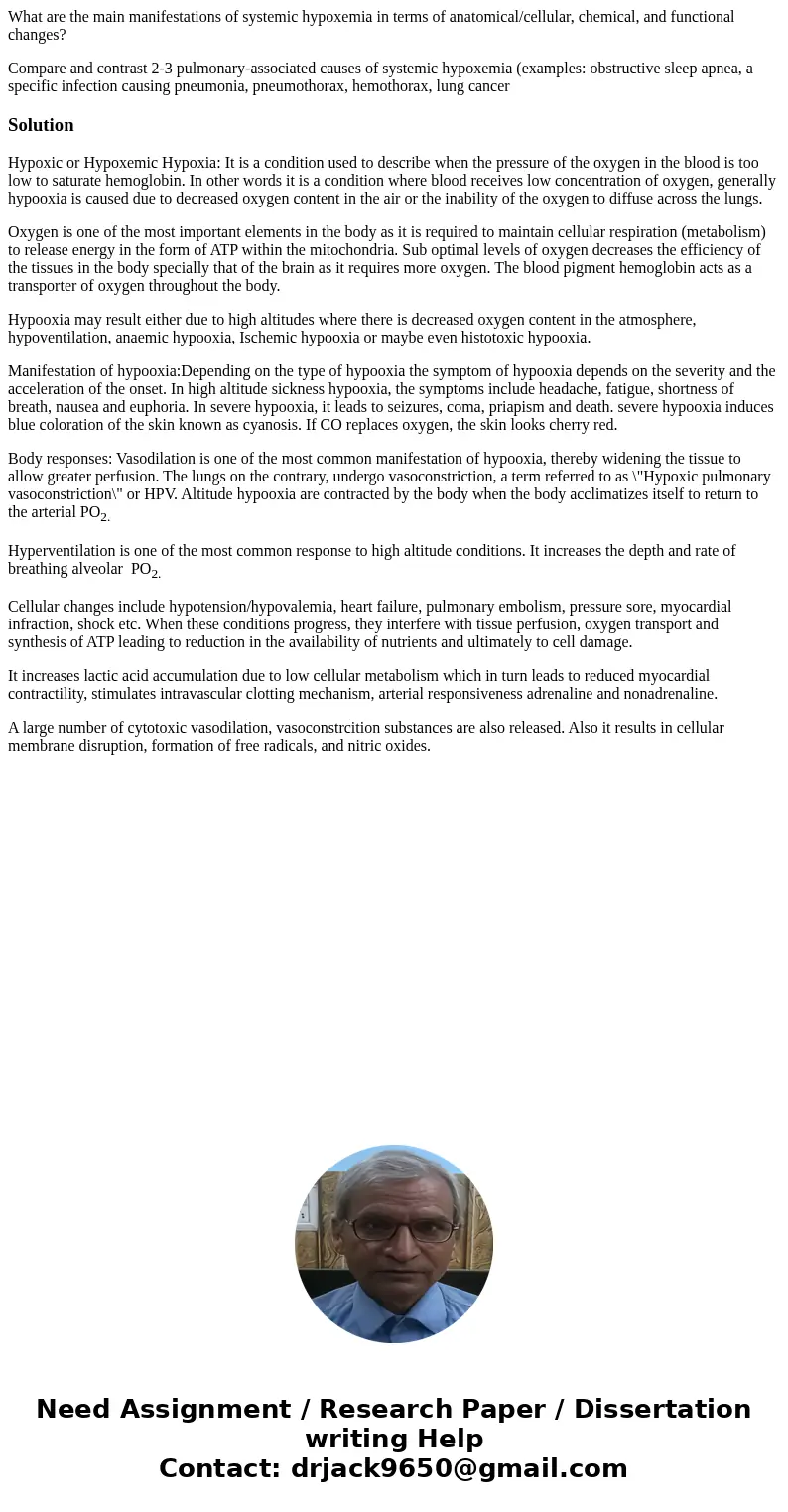What are the main manifestations of systemic hypoxemia in te
What are the main manifestations of systemic hypoxemia in terms of anatomical/cellular, chemical, and functional changes?
Compare and contrast 2-3 pulmonary-associated causes of systemic hypoxemia (examples: obstructive sleep apnea, a specific infection causing pneumonia, pneumothorax, hemothorax, lung cancer
Solution
Hypoxic or Hypoxemic Hypoxia: It is a condition used to describe when the pressure of the oxygen in the blood is too low to saturate hemoglobin. In other words it is a condition where blood receives low concentration of oxygen, generally hypooxia is caused due to decreased oxygen content in the air or the inability of the oxygen to diffuse across the lungs.
Oxygen is one of the most important elements in the body as it is required to maintain cellular respiration (metabolism) to release energy in the form of ATP within the mitochondria. Sub optimal levels of oxygen decreases the efficiency of the tissues in the body specially that of the brain as it requires more oxygen. The blood pigment hemoglobin acts as a transporter of oxygen throughout the body.
Hypooxia may result either due to high altitudes where there is decreased oxygen content in the atmosphere, hypoventilation, anaemic hypooxia, Ischemic hypooxia or maybe even histotoxic hypooxia.
Manifestation of hypooxia:Depending on the type of hypooxia the symptom of hypooxia depends on the severity and the acceleration of the onset. In high altitude sickness hypooxia, the symptoms include headache, fatigue, shortness of breath, nausea and euphoria. In severe hypooxia, it leads to seizures, coma, priapism and death. severe hypooxia induces blue coloration of the skin known as cyanosis. If CO replaces oxygen, the skin looks cherry red.
Body responses: Vasodilation is one of the most common manifestation of hypooxia, thereby widening the tissue to allow greater perfusion. The lungs on the contrary, undergo vasoconstriction, a term referred to as \"Hypoxic pulmonary vasoconstriction\" or HPV. Altitude hypooxia are contracted by the body when the body acclimatizes itself to return to the arterial PO2.
Hyperventilation is one of the most common response to high altitude conditions. It increases the depth and rate of breathing alveolar PO2.
Cellular changes include hypotension/hypovalemia, heart failure, pulmonary embolism, pressure sore, myocardial infraction, shock etc. When these conditions progress, they interfere with tissue perfusion, oxygen transport and synthesis of ATP leading to reduction in the availability of nutrients and ultimately to cell damage.
It increases lactic acid accumulation due to low cellular metabolism which in turn leads to reduced myocardial contractility, stimulates intravascular clotting mechanism, arterial responsiveness adrenaline and nonadrenaline.
A large number of cytotoxic vasodilation, vasoconstrcition substances are also released. Also it results in cellular membrane disruption, formation of free radicals, and nitric oxides.

 Homework Sourse
Homework Sourse